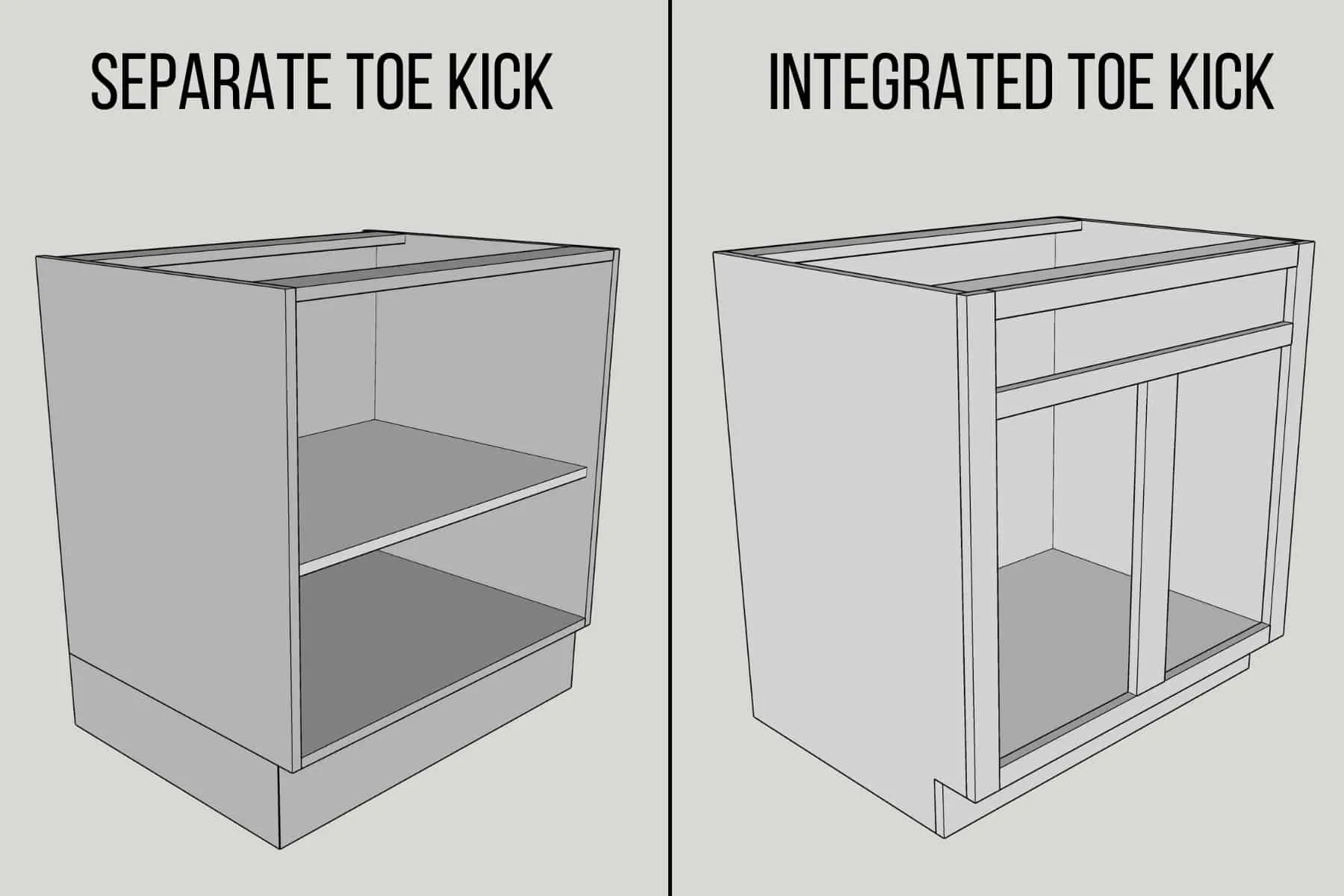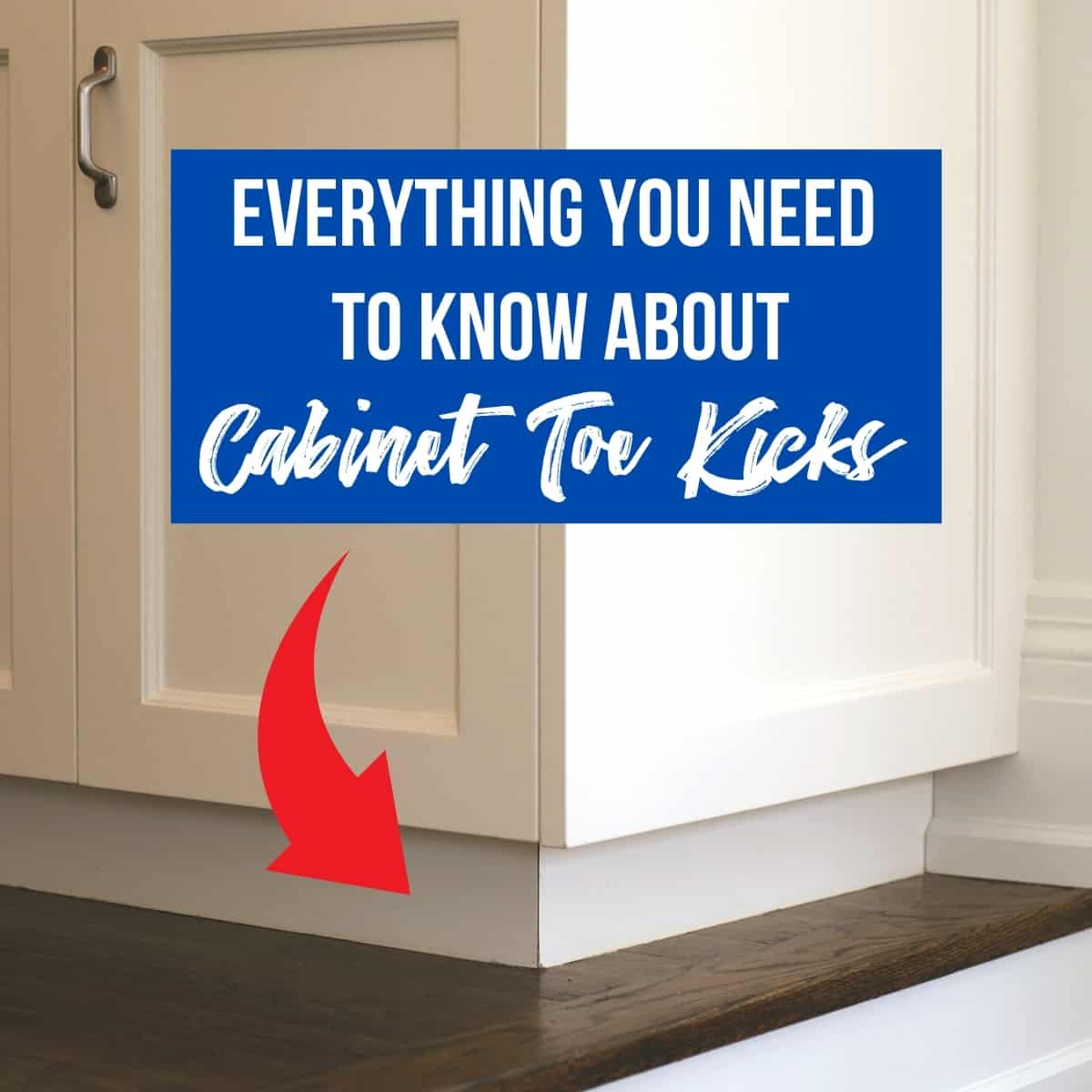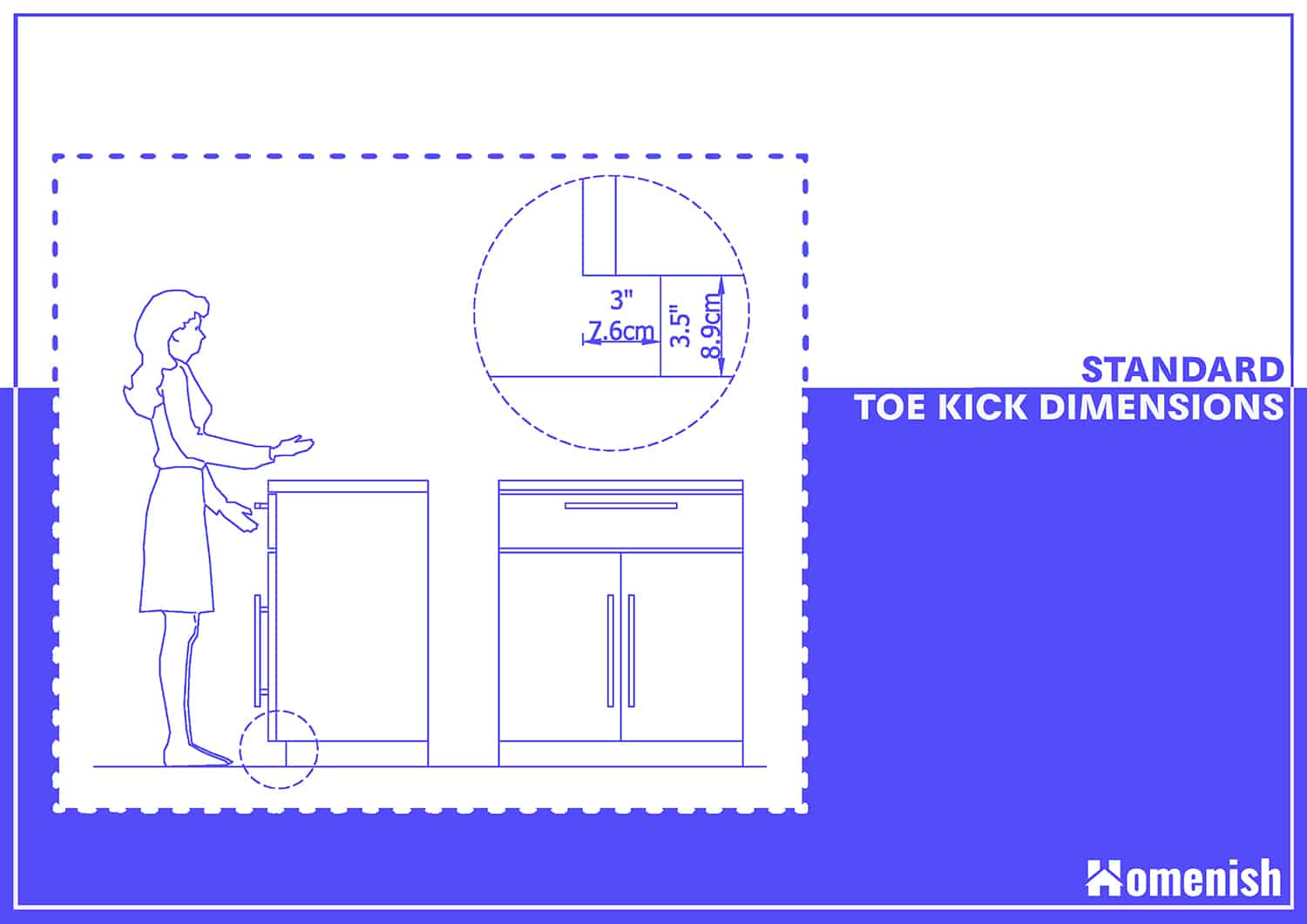What is a Toe Kick?

The toe kick, often overlooked, plays a crucial role in kitchen design, providing both functionality and aesthetic appeal. This often-ignored element serves as a hidden hero in kitchen design, offering both functional and aesthetic advantages.
Purpose of a Toe Kick
The toe kick’s primary purpose is to provide a space for your feet to comfortably rest while standing at your kitchen counter or island. This space prevents fatigue and strain on your legs, enhancing your overall kitchen experience. Imagine standing for hours on end, preparing a feast for your loved ones, without the comforting support of a toe kick. The discomfort and potential for leg fatigue would be a recipe for disaster.
Benefits of Having a Toe Kick, What is a toe kick in kitchen cabinets
Beyond its primary purpose, the toe kick offers a range of benefits, including:
- Improved Accessibility: A toe kick provides easier access to the lower cabinets, making it easier to reach items stored within. This is particularly important for individuals with mobility limitations or those who prefer to avoid bending excessively.
- Enhanced Aesthetics: A toe kick can seamlessly integrate with the overall design of your kitchen, adding a touch of sophistication and elegance to the space. The toe kick can be customized to match the style and color of your cabinets, creating a cohesive and visually pleasing look.
- Protection for Cabinets: The toe kick acts as a protective barrier for your lower cabinets, shielding them from scratches, scuffs, and dents caused by foot traffic. This helps to maintain the integrity and longevity of your cabinets, preserving their appearance and functionality for years to come.
Typical Dimensions of a Toe Kick
The standard height of a toe kick is 4 inches, with a depth ranging from 3 to 4 inches. However, these dimensions can be adjusted to accommodate individual preferences or specific design requirements. For instance, individuals with larger feet might prefer a slightly deeper toe kick, while those with limited mobility might opt for a shallower depth.
Materials Used for Toe Kicks
Toe kicks can be constructed from a variety of materials, each offering unique characteristics and aesthetic appeal:
- Wood: Wood is a classic choice for toe kicks, offering a warm and natural aesthetic that complements a wide range of kitchen styles. Common wood species used for toe kicks include oak, maple, cherry, and walnut. The choice of wood type often depends on personal preference, budget, and the overall design theme of the kitchen.
- Laminate: Laminate is a durable and affordable option for toe kicks, offering a wide range of colors and patterns to match any kitchen design. Laminate is known for its resistance to scratches, stains, and moisture, making it a practical choice for high-traffic areas.
- Metal: Metal toe kicks, typically made from aluminum or stainless steel, offer a modern and sleek look that complements contemporary kitchens. Metal toe kicks are also known for their durability and resistance to wear and tear, making them a suitable choice for kitchens with heavy foot traffic.
Styles of Toe Kicks
Toe kicks come in a variety of styles, allowing you to personalize your kitchen design:
- Standard Toe Kick: This is the most common style, featuring a simple and straightforward design that seamlessly blends with the cabinetry. It is typically constructed from a single piece of material and offers a clean and uncluttered look.
- Decorative Toe Kick: This style incorporates decorative elements, such as molding, trim, or contrasting materials, to add visual interest and enhance the overall design of the kitchen. For example, a decorative toe kick might feature a contrasting wood species or a decorative trim piece, creating a unique and eye-catching detail.
- Hidden Toe Kick: This style is designed to be concealed, creating a minimalist and streamlined look. The toe kick is integrated with the cabinetry, creating a seamless transition from the floor to the base of the cabinets. This style is often preferred in modern kitchens where a clean and uncluttered aesthetic is desired.
Toe Kick Functionality: What Is A Toe Kick In Kitchen Cabinets

Toe kicks are not just decorative elements; they play a crucial role in enhancing kitchen ergonomics and accessibility. A well-designed toe kick can significantly improve the user experience, making the kitchen a more comfortable and functional space.
Ergonomics and Comfort
Toe kicks contribute significantly to kitchen ergonomics by providing a comfortable space for users to stand. They prevent fatigue and strain on the legs and back, which can occur when standing for prolonged periods without adequate support. A toe kick allows users to maintain a natural stance, reducing pressure on their lower body.
- Proper Leg Positioning: A toe kick provides a platform for the user’s feet, allowing for a more natural and comfortable leg position while working in the kitchen. This reduces strain on the knees, ankles, and feet, promoting better posture and reducing fatigue.
- Reduced Back Strain: By supporting the legs, toe kicks indirectly reduce strain on the back. Without proper leg support, users tend to lean forward, putting unnecessary stress on their back muscles. A toe kick helps maintain a more upright posture, minimizing back pain.
- Increased Comfort: A toe kick simply makes standing in the kitchen more comfortable. It provides a slight elevation, allowing for a more natural foot position and reducing the pressure on the balls of the feet.
Accessibility in Kitchens
Toe kicks can significantly impact the accessibility of kitchens, especially for individuals with mobility challenges. A properly designed toe kick can provide a stable platform for users to maneuver their wheelchairs or walkers, ensuring safe and independent movement in the kitchen.
- Wheelchair Access: A toe kick with a smooth, flat surface allows wheelchair users to easily navigate around the kitchen. This is especially important in areas with tight spaces, such as near the sink or stove.
- Walker Access: Toe kicks can provide a stable base for individuals using walkers, preventing them from tripping or bumping into cabinets. A smooth surface is essential for easy maneuverability.
- Height Considerations: For individuals using wheelchairs or walkers, the height of the toe kick is crucial. It should be designed to allow for comfortable clearance and maneuverability.
Designing Toe Kicks for Different Heights
To ensure accessibility and comfort for users of different heights, toe kicks should be designed with adjustable options or different height variations.
- Adjustable Toe Kicks: Some toe kick systems are adjustable, allowing for height modifications to accommodate different users. This can be achieved using adjustable legs or a system of brackets that allow for varying heights.
- Multiple Height Options: Offering different toe kick heights during the initial design phase of the kitchen is another solution. This allows for a customized fit based on the needs of the individuals who will be using the kitchen.
- Staggered Toe Kicks: In some cases, a staggered toe kick design can be used to accommodate different heights. This involves creating a series of toe kicks at varying heights, allowing for flexibility in positioning.
Incorporating Toe Kicks into Different Kitchen Layouts
Toe kicks can be seamlessly integrated into various kitchen layouts, enhancing both functionality and aesthetics.
- Straight Runs: In traditional straight-run kitchen layouts, toe kicks are typically installed along the base cabinets, providing a continuous line of support.
- L-Shaped Kitchens: In L-shaped kitchens, toe kicks can be used to create a continuous flow along the two sides of the layout. This provides a consistent level of support and enhances the overall aesthetic of the kitchen.
- U-Shaped Kitchens: U-shaped kitchens benefit from toe kicks installed along all three sides, creating a complete and unified base for the cabinets.
- Island Kitchens: Islands in kitchens often incorporate toe kicks, providing a comfortable space for users to stand while preparing food or socializing.
Toe Kick Materials
Various materials can be used for toe kicks, each with its own advantages and disadvantages. The choice of material should consider factors such as durability, aesthetics, and cost.
| Material | Pros | Cons |
|---|---|---|
| Wood | Durable, natural look, can be stained or painted to match cabinets | More expensive, susceptible to scratches and water damage |
| Laminate | Affordable, durable, wide range of colors and styles | Not as natural looking as wood, can be prone to chipping |
| Metal | Durable, resistant to scratches and water damage, modern look | Can be expensive, may be cold to the touch |
| Plastic | Affordable, easy to clean, resistant to moisture | Not as durable as other materials, may not be as aesthetically pleasing |
Installing Toe Kicks

Installing toe kicks is a straightforward process that enhances the functionality and aesthetics of your kitchen cabinets. This section will guide you through the steps, tools, and techniques for successfully installing toe kicks.
Tools Needed for Installing Toe Kicks
The tools needed for installing toe kicks are common and readily available.
- Tape Measure: For accurately measuring the length and width of your toe kicks.
- Pencil: For marking the cutting lines on your toe kick material.
- Circular Saw or Table Saw: For precisely cutting the toe kick material to size.
- Safety Glasses: To protect your eyes from sawdust and debris.
- Safety Gloves: To protect your hands from sharp edges and splinters.
- Drill: For drilling pilot holes for attaching the toe kicks to the cabinets.
- Screwdriver or Drill Driver: For driving the screws into the toe kicks.
- Wood Glue: For securing the toe kicks to the cabinets.
- Clamps: To hold the toe kicks in place while the glue dries.
- Level: To ensure the toe kicks are installed at a consistent height.
Measuring and Cutting Toe Kick Materials
Accurate measurements are crucial for a seamless installation.
- Measure the length and width of each toe kick section. Remember to factor in any gaps or spaces between the cabinets.
- Mark the cutting lines on your toe kick material using a pencil. Be sure to mark the lines clearly and accurately.
- Cut the toe kick material to size using a circular saw or table saw. Make sure the cuts are straight and precise to ensure a clean and professional finish.
Attaching Toe Kicks to Cabinets
Once you have cut your toe kick materials to size, you can begin attaching them to the cabinets.
- Apply wood glue to the bottom edge of the toe kick. Use a generous amount of glue to ensure a strong bond.
- Position the toe kick against the cabinet base. Make sure the toe kick is flush with the cabinet and level.
- Use clamps to hold the toe kick in place while the glue dries. Apply even pressure to ensure a secure bond.
- Drill pilot holes for the screws. This will prevent the wood from splitting when you drive the screws in.
- Attach the toe kick to the cabinet using screws. Drive the screws into the pilot holes you drilled.
Installing Toe Kicks in Different Cabinet Styles
The installation process may vary slightly depending on the style of your cabinets.
- For cabinets with exposed bases: Attach the toe kick directly to the cabinet base using screws or glue.
- For cabinets with a closed base: Attach the toe kick to the bottom edge of the cabinet using screws or glue.
- For cabinets with a built-in toe kick: The toe kick is typically integrated into the cabinet design and does not require separate installation.
What is a toe kick in kitchen cabinets – A toe kick is a small, often unseen, space beneath kitchen cabinets. This space provides clearance for your feet, preventing you from bumping into the cabinet base. When choosing new kitchen cabinets, you might consider the style and functionality of toe kicks.
For example, kitchen cabinets in King of Prussia often feature sleek, modern toe kicks that enhance the overall design. The toe kick can be customized to fit your needs and preferences, whether you prefer a simple, flat surface or a more decorative design.
A toe kick is a small, often hidden, space beneath kitchen cabinets that allows for comfortable legroom while standing at the counter. When choosing new cabinets, it’s important to consider their style and functionality, and a toe kick is a detail that can make a big difference in your kitchen’s overall look and feel.
If you’re in Manchester, CT, and are looking for high-quality kitchen cabinets, check out kitchen cabinets manchester ct for inspiration and expert advice. With the right cabinets, including a well-designed toe kick, your kitchen will be both functional and stylish.